You can have peaceful or lively moments depending on your mood!
Olive Hill Villa is located in Aggeliana Village, 22 km far from Rethymno city and is one of the most famous lowland villages of Crete.
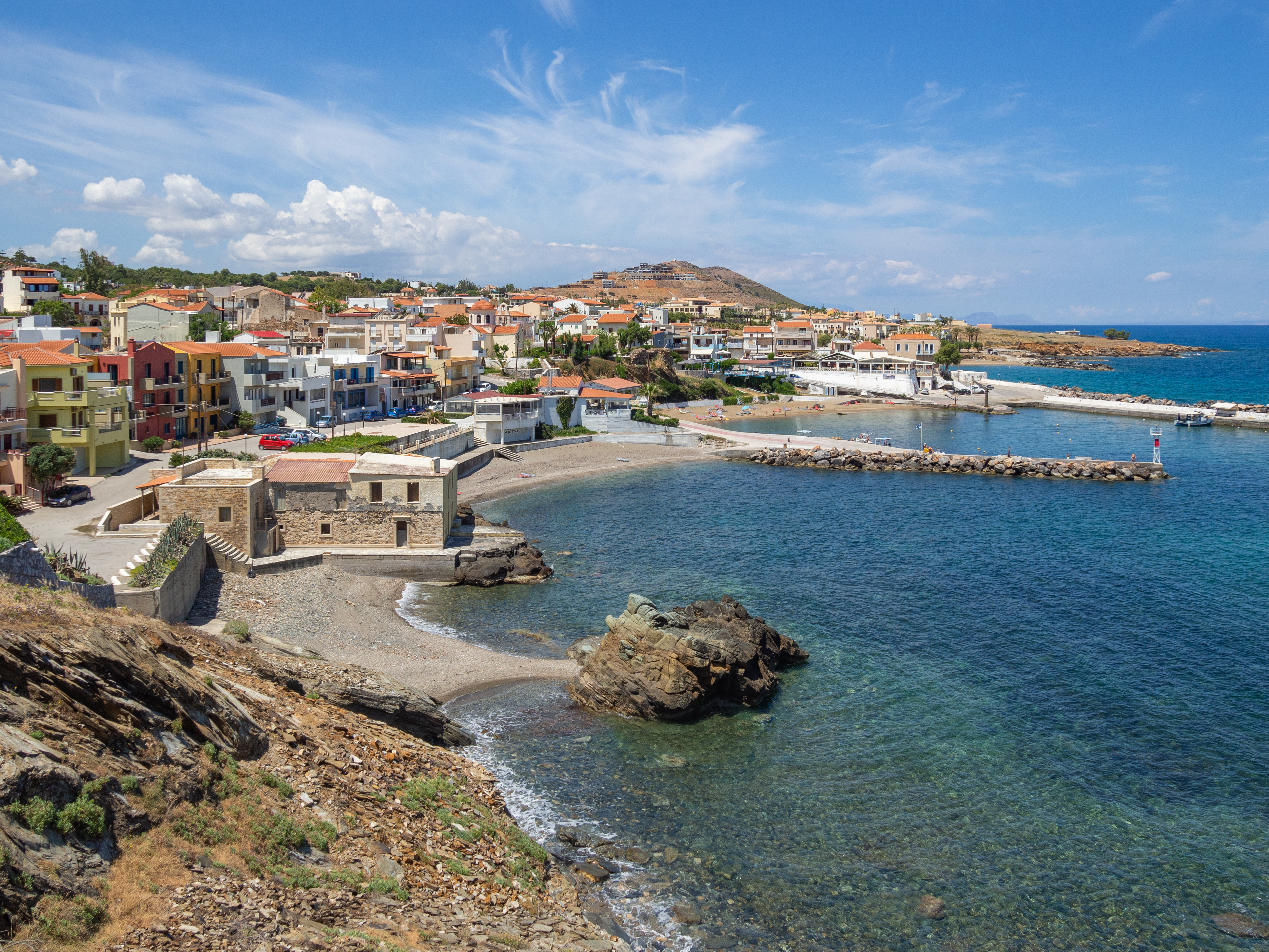
Panormos Village and Beaches
Panormo is a picturesque seaside village in Rethymno prefecture, located about 20 km east of Rethymno Town and 5 km from Aggeliana. It boasts two lovely, large beaches and several smaller ones.
The first one is called Limanaki and is a sandy shore with crystalline, shallow waters, ideal for children. On the coast, you will find all the essential amenities, including umbrellas, sunbeds, showers, plenty of restaurants and accommodation options.
The second one of the main beaches is called Limni and is also sandy with dazzling azure waters. It is organized with umbrellas and sunbeds and surrounded by an enchanting, craggy landscape. On its eastern side, separated by a stone pier, you will find a small pebbly shore with a rocky seabed, ideal for snorkeling.
Spilies Beach
Kitrenosis Beach, also known as Spilies, lies 15 km east of Rethymno and 8 km from Aggeliana, nestled in the tranquil and secluded area of Latzima. Just a few kilometers past Skaleta and before Geropotamos, within the Prinos community of Mylopotamos. The beach is set in a charming small bay, adorned with smooth pebbles and boasting crystal-clear, deep waters, all sheltered by towering, vertical cliffs.
One of the beach's most striking features is the presence of large caves carved into the cliffs. To the left and on the western side, you'll discover numerous caves with uniquely sculpted rock formations, adding to the beach’s wild beauty. These caves also serve as a sanctuary for the endangered Mediterranean monk seal, offering a rare glimpse of nature's wonders. Though still off the beaten path, Kitrenosis Beach offers basic amenities, including umbrellas and a small canteen for visitors. The only challenge you might face is the strong northern winds, which can create sizable waves, but they only add to the rugged charm of this hidden coastal treasure.
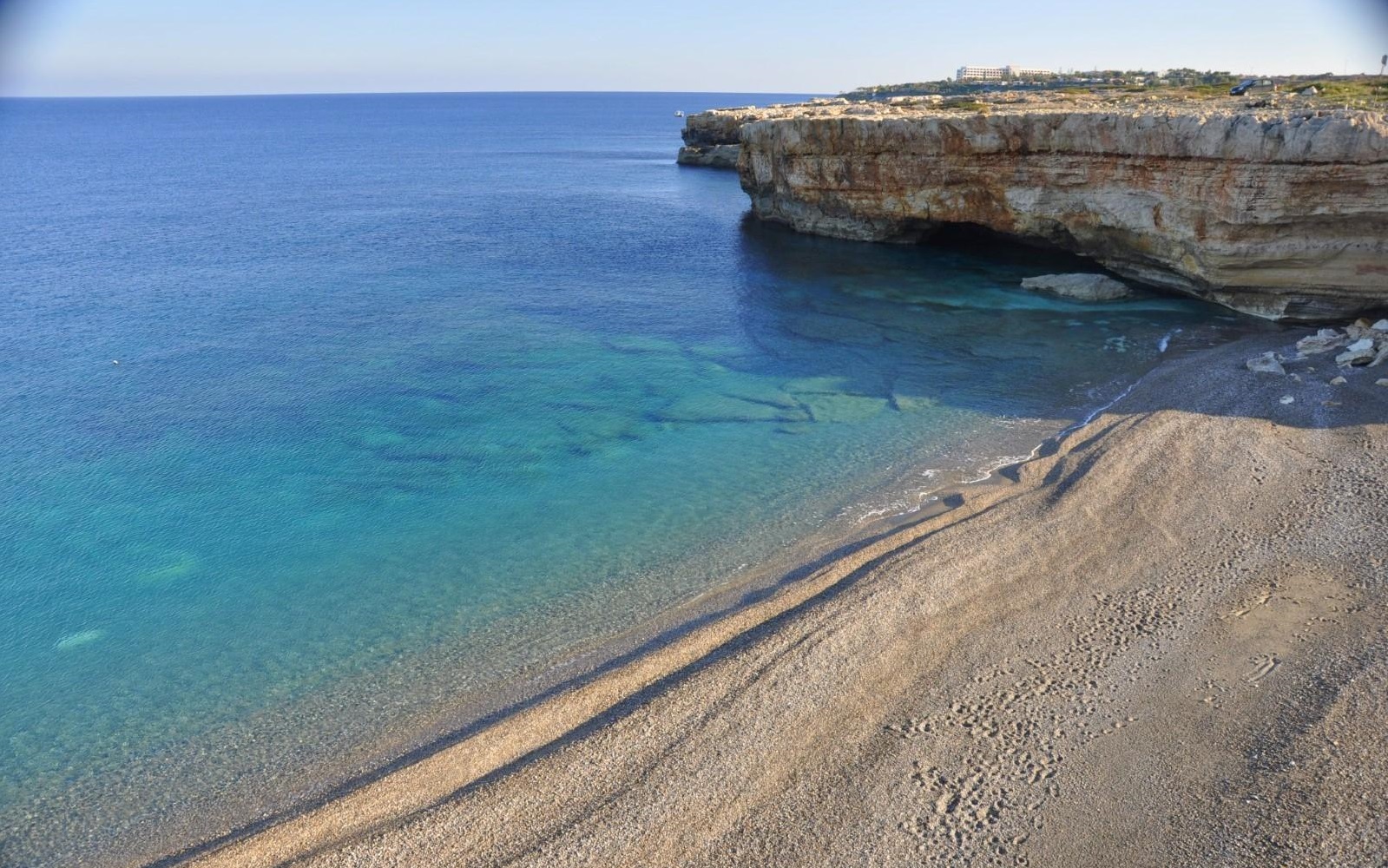

Agios Pavlos Sandhills (Cape Melissa)
One of the best beaches in central Crete is the breathtaking Melissa Cape Sandhills near Agios Pavlos, at the south end of the vast seafront of Akoumiani Gialia. he deep sea is very inviting for a swim and it is quite common to see people in various states of beachwear or lack thereof owing to the area's relative seclusion and privacy offered by the coves around the beaches. Melissa Cape Sandhills, perhaps the most beautiful beach of prefecture Rethymnon, is a fantastic bay in a wild and majestic scenic landscape with huge sandhills. There are a few umbrellas (that’s all!), but you can find shade in the rocky caves shaped in the middle of the beach. Moreover, given its large size, the beach never seems busy and you can easily stay nude even in peak season. The beach has a rich seabed and is ideal for snorkeling. The sunset of the area is stunning and the peaceful atmosphere has attracted a very good club of yoga and Tai Chi, with some of the best trainers in the world. The best sunset can be viewed from peak Thronos, directly above the beach (some 300m high, vertical cliffs).
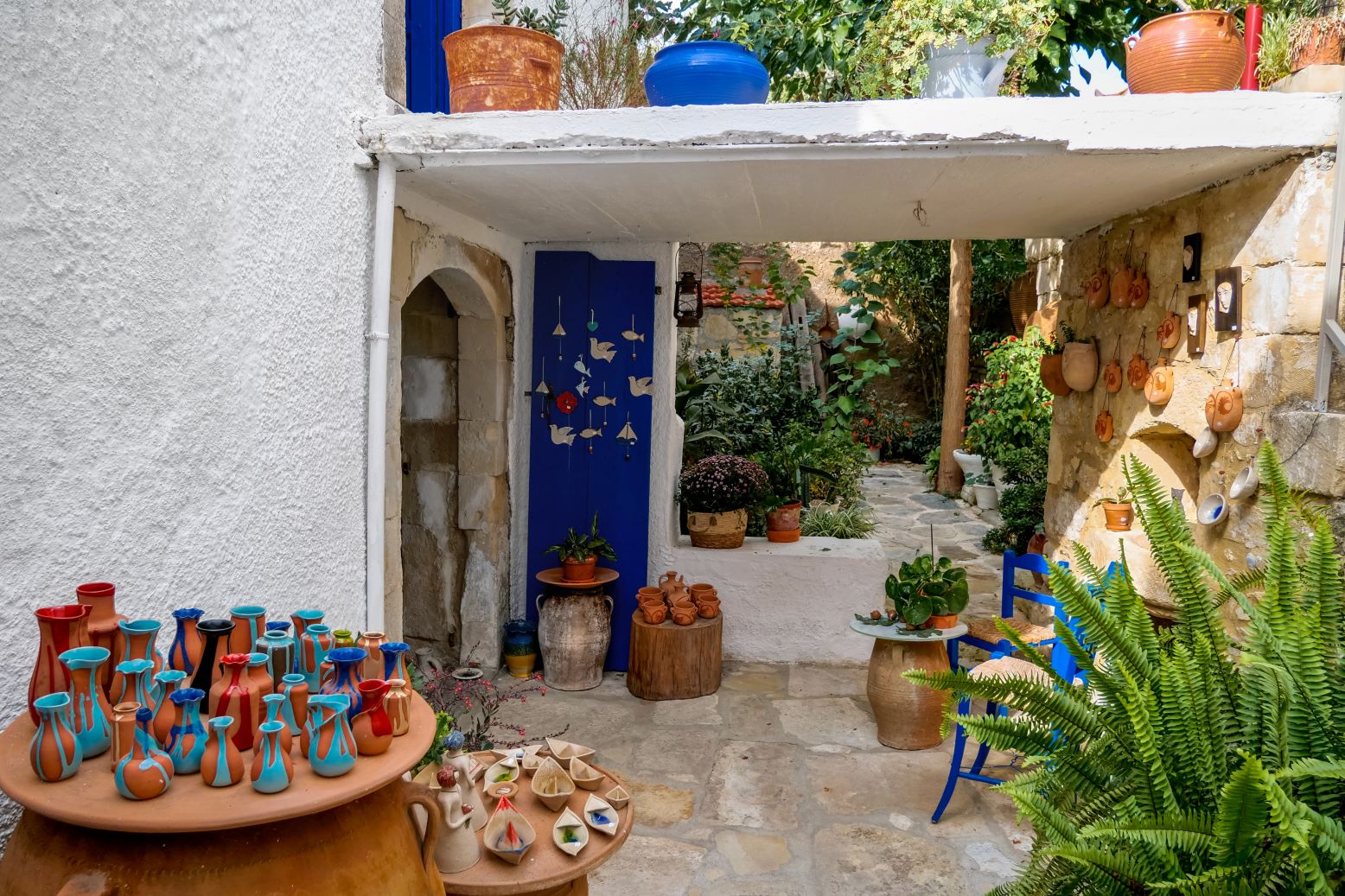
Margarites Village
Margarites (Greek: Mαργαρίτες) is a small traditional village located in the prefecture of Rethymno, 7 km from Aggeliana. The village is known for its unique pottery tradition, its picturesque alleys, and its well-preserved architecture. Margarites is a perfect destination for those seeking an authentic Cretan experience and a glimpse into the island’s rich history and culture.
Margarites is renowned for its pottery tradition, which dates back to the Minoan period. The village’s unique clay soil and the local potters’ skills have made Margarites pottery one of the most famous in Crete. Visitors can visit the local workshops and witness the potters at work, using traditional techniques to create exquisite pieces of art. The pottery shops in Margarites offer a vast array of products, including vases, bowls, jars, and other decorative items, which are perfect souvenirs to take home.
Margarites is a unique destination in Crete, offering a combination of history, culture, and natural beauty. The village’s pottery tradition, architecture, local cuisine, and festivals create a unique atmosphere that attracts visitors from all over the world!Triopetra lies in the central part of a long beachfront, called Akoumiani Gialia, (i.e. Akoumia Beach). This is named like this because the wider area of Triopetra was once the winter sheter of Akoumia village residents, who had built small cottages to spend the night near their olive groves. Today the land is still owned mostly by the residents of Akoumia and thus, most, hotel owners originate from the same village..Triopetra consists of two beaches, which are separated by a small peninsula. At the edge of the peninsula, in the sea, three majestic rocks rise. Triopetra is named after these rocks, since it means “Three Rocks”.
Ancient Eleutherna archeological site & Museum
Ancient Eleftherna is located 25km southeast of Rethymno and 12 km from Aggeliana. The town is the most important archaeological site in the prefecture of Rethymno, which has not fully been excavated and it is expected to give archaeologists many more discoveries. The first organized excavations here started in 1985 by the University of Crete.
The town of Eleftherna was founded by the Dorians around the 9th century BC and was inhabited up to the early Byzantine years.
Eleftherna was one of the towns that were on the side of Macedonia against Knossos during the first Cretan War (205BC-200BC). During the occupation of Crete by the Romans, the town managed to resist strongly against the Roman general Quintus Caecilius Metellus, until it fell by treachery. During the Roman period the city continued to flourish and baths, huge cisterns, villas, public buildings and towers were erected. The Byzantine era was the last time for the city before getting destroyed by the Arabs, when it became a Diocese and the great basilica, remains of which survive today, was built. The importance of Eleftherna as an archaeological site led to the decision for founding a museum above the site, the imposing Archaeological Museum of Eleftherna.
The Museum of Ancient Eleftherna is the first museum inside an archaeological site in Crete, and although smaller in size, is similar to those of Olympia, Delphi, and Vergina. The museum was created to house the results of the excavations carried out for thirty years in the ancient city of Eleutherna.
The three halls of the museum host the whole history of Eleftherna from 3000 BC to 1300 AD with everyday objects and artworks.
The largest Hall A includes exhibits selected for a short presentation of the public, political, religious, social and private life of Eleftherna, but also objects imported from other Cretan cities and regions.
-Hall B houses the religious and devotional life in Eleftherna, from the Early Iron Age to the Byzantine period. The room houses one of the most important findings of the Necropolis of Orthi Petra, the "Lady of Eleftherna", which is related to the dedalic statue "Lady of Oser" in the Louvre Museum in Paris.
-Hall C is dedicated to the necropolis of Eleftherna. Here are exhibited only finds from excavations in the necropolis of Orthi Petra, as in this are illustrated descriptions of the Homeric world, such as the ritual of burial fire (burning), such that the funerary pyre of Patroclus described in the Iliad (rhapsody y).


Ligres beach
Ligres is located 51km south of Rethymno and 7km south of the village Kerames, at the foot of the imposing mount of Siderotas. It is actually the north part of the beachfront called Akoumiani Gialia, starting from Mellissa cape to the south.
Ligres is a vast beach with coarse sand and fantastic deep sea. The relatively tough access has fortunately kept the development of tourism away, making it one of the nicest, tranquil and most secluded beaches on the island. The beach is not organized, but there are taverns and a few rooms on the west part of the beach, which can be accessed by car through a bad asphalt road. At the west end of the beach there is a beautiful waterfall having water all year round, which falls next to the sea!
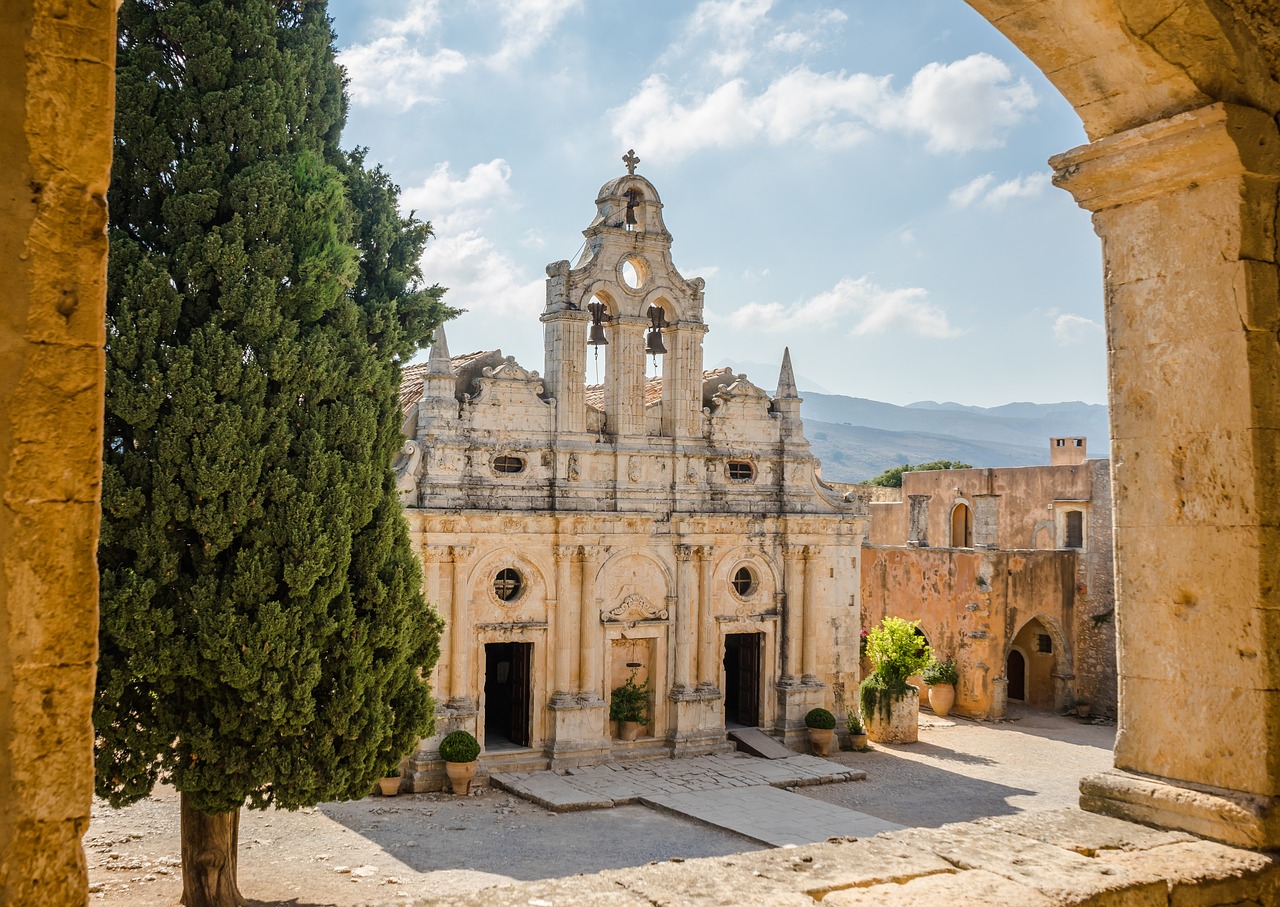
Sacred Monastery of Arkadi
The Monastery of Arkadi is a place of special historical interest, known for the events that took place there during the Revolt of 1866. The monastery is built on the edge of a high plateau, near the Arkadi Gorge. It is one of the most important monuments of Crete and a great pole of attraction for visitors.
Located 23 km southeast of Rethymno Town, 20 km fro Aggeliana and 500 m above sea level, the initial fortified part of the monastery was built in the 12th century, presumably by a monk named Arkadios. According to another version, the monastery has been named after the Byzantine emperor Arcadius. The most important part of the Monastery is a church dedicated to the Saints Constantine and Helen, as well as to the Transfiguration of Jesus.
The ultimate contribution of the Monastery is its action of self-sacrifice, heroism and God-pleasant altruism: the Holocaust of November 8th 1866. This way the Monastery manifested its active presence in the fight against enslavement. It managed to throw off the yoke of slavery that the enemies raged to impose and succeeded in changing the course of Crete’s history.
Ever since, the Monastery has been carrying the weight of its history and taking part in the struggles that followed, in all aspects of life, on our long-suffering island in an effort to live up to its glorious past in any possible way.
Preveli Palmbeach
The Beach of Preveli, also known as Lake Preveli or Phoenix, is located about 50 km from Aggeliana, at the exit of the imposing Kourtaliotikos Gorge, where the Grand River (Megalos Potamos) flows. It is certainly the most famous beach in south Crete, accepting thousands of visitors every summer. On the banks of the Grand River, there is a large colony of Theophrastus palm trees, which give the region a sense of a tropical landscape. The river, forming a small lake, 500m long, before emptying into the sea, has water all year round.
At the exit of the river, a sandy beach with pebbles and sand is formed, with sea water being very cool due to the river. In the eastern part of the beach, there is a beautiful rock reminding of a heart.The beach is not well organized because the area is protected, without any umbrellas.

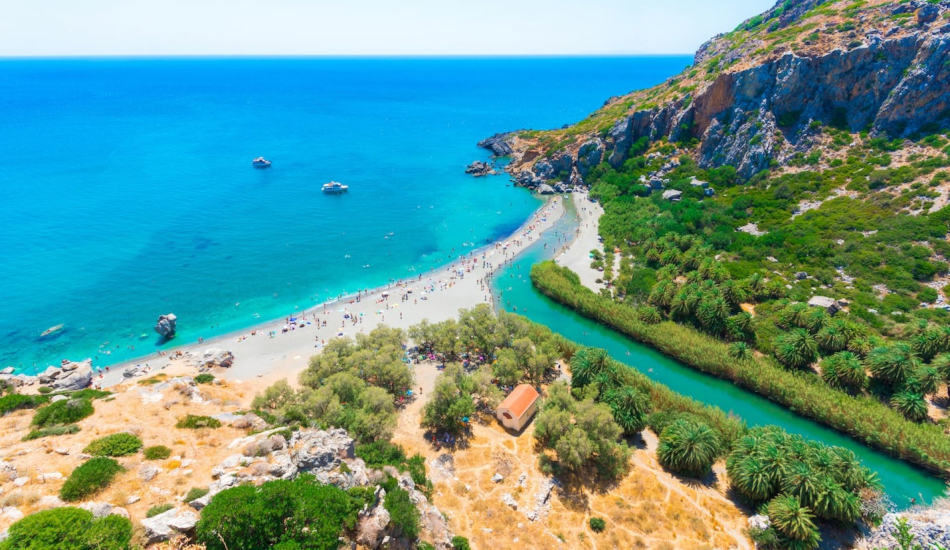
Preveli Palmbeach
The Beach of Preveli, also known as Lake Preveli or Phoenix, is located at the exit of the imposing Kourtaliotikos Gorge, where the Grand River (Megalos Potamos) flows. It is certainly the most famous beach in south Crete, accepting thousands of visitors every summer. On the banks of the Grand River, there is a large colony of Theophrastus palm trees, which give the region a sense of a tropical landscape. The river, forming a small lake, 500m long, before emptying into the sea, has water all year round.
At the exit of the river, a sandy beach with pebbles and sand is formed, with sea water being very cool due to the river. In the eastern part of the beach, there is a beautiful rock reminding of a heart.The beach is not well organized because the area is protected, without any umbrellas.
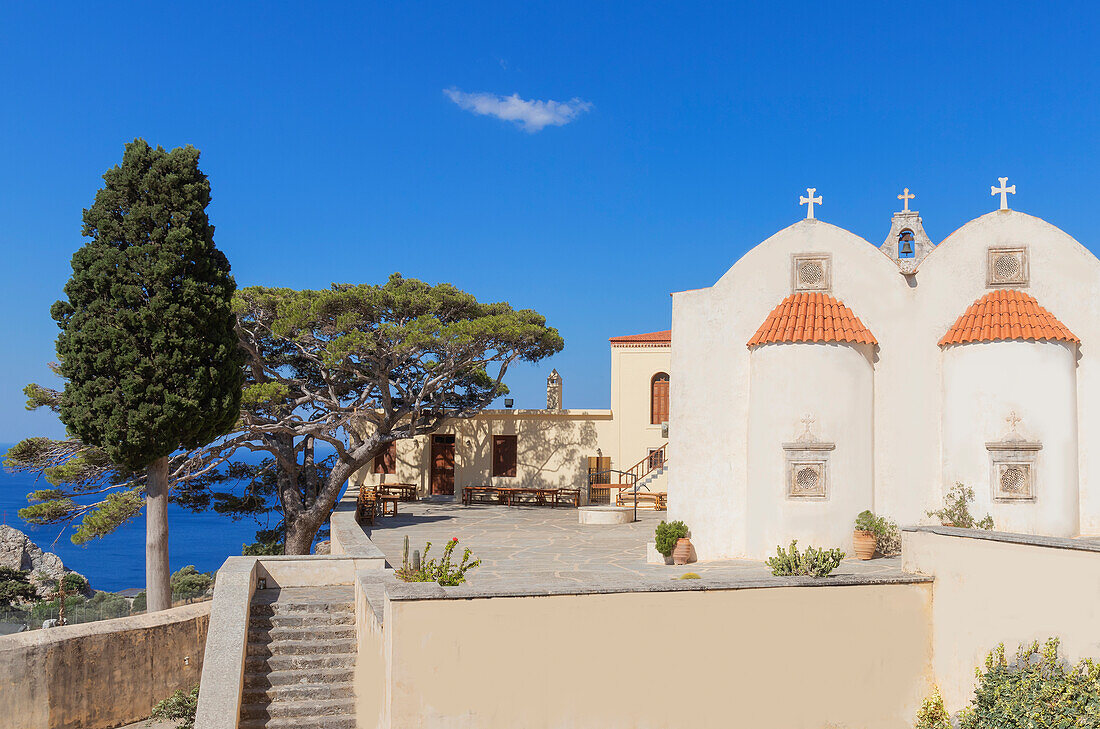
Preveli Monastery
The monastery of Preveli is located about 50 km from Aggeliana, in one of the most beautiful places in Crete. Although the exact date it was erected is unknown, there are indications of the presence of a small monastery in the area since the 10th century AD. The Preveli monastery is actually two monasteries: the Kato Monastery, that is now abandoned, and the Piso Monastery of Theologos. This one is inhabited by monks and can be visited. In the monastery premises there is a museum that exhibits a collection of icons, ritual objects and relics.
Kourtaliotis Gorge
Kourtaliotis Gorge is one of the most spectacular natural attractions of the prefecture Rethymnon and its located, about 50 km from Aggeliana,. Named after the Kourtaliotis or Big River, this extraordinary gorge is famous for the variety of Cretan birds and wild animals that live there and for its impressive natural scenery. The river’s water have to travel a long way under old bridges and over beautiful waterfalls before it can reach the sea and the palm trees of Preveli beach. The gorge is 3km long with cliffs of 600 meters in height and along with the neighboring lake of Preveli, is part of the Natura 2000 Network.
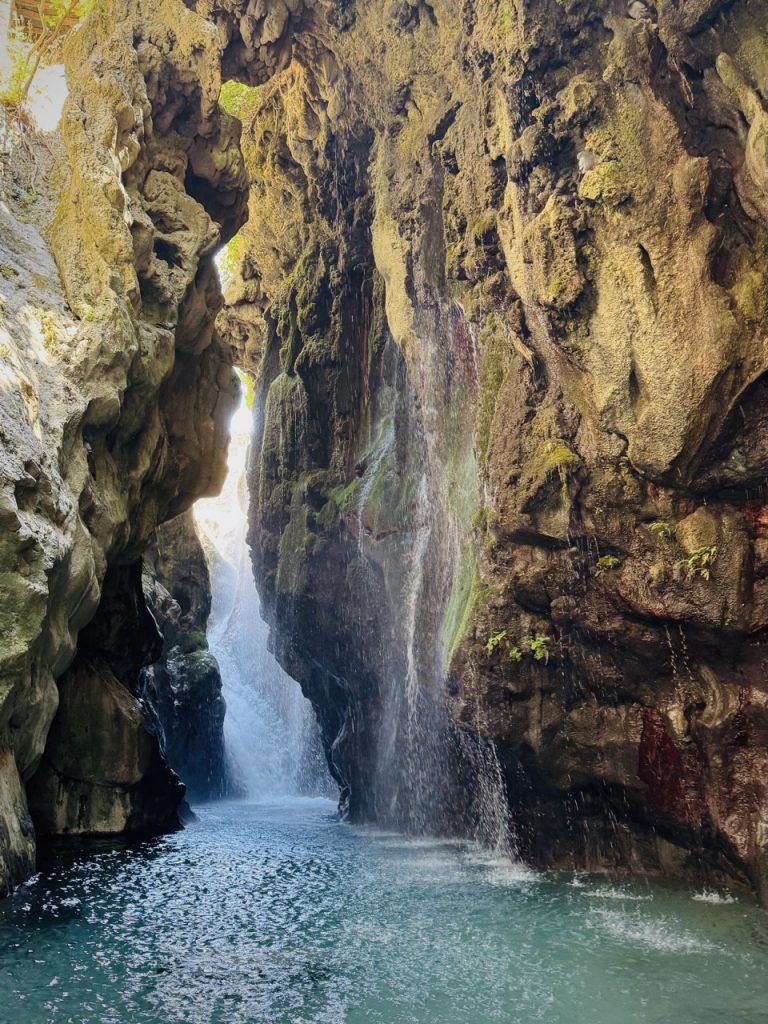

Kourtaliotis Gorge
Kourtaliotis Gorge is one of the most spectacular natural attractions of the prefecture Rethymnon. Named after the Kourtaliotis or Big River, this extraordinary gorge is famous for the variety of Cretan birds and wild animals that live there and for its impressive natural scenery. The river’s water have to travel a long way under old bridges and over beautiful waterfalls before it can reach the sea and the palm trees of Preveli beach. The gorge is 3km long with cliffs of 600 meters in height and along with the neighboring lake of Preveli, is part of the Natura 2000 Network.
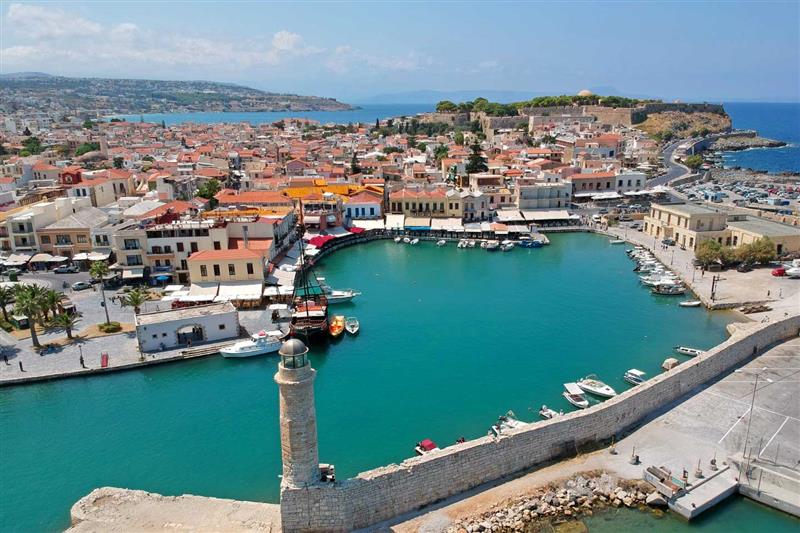
Rethymno City
Rethymno is a charming city located 22 km from Aggeliana village, on the northern coast of Crete, known for its rich history, stunning architecture, and vibrant culture. Founded in the 4th century BC, Rethymno boasts a blend of Venetian, Ottoman, and Byzantine influences that can be seen in its well-preserved Old Town, characterized by narrow cobblestone streets, picturesque alleys, and historic buildings.
At the heart of the city lies the impressive Venetian harbor, lined with cafés and tavernas, where visitors can enjoy fresh seafood while taking in views of the old fortress, Fortezza. This 16th-century fortress offers panoramic vistas of the city and the sea, making it a popular spot for both history buffs and photographers.
Rethymno's Old Town is also home to several notable landmarks, including the Rimondi Fountain, the Great Gate, and the many churches and mosques that reflect its diverse cultural heritage. The city hosts various festivals and events throughout the year, showcasing Cretan music, dance, and cuisine, providing visitors with a taste of local traditions.
The nearby sandy beaches, such as Rethymno Beach, are perfect for sunbathing and water sports, making the city an ideal destination for relaxation and outdoor activities. With its rich history, vibrant atmosphere, and stunning coastal scenery, Rethymno offers a unique blend of experiences for anyone exploring Crete.

